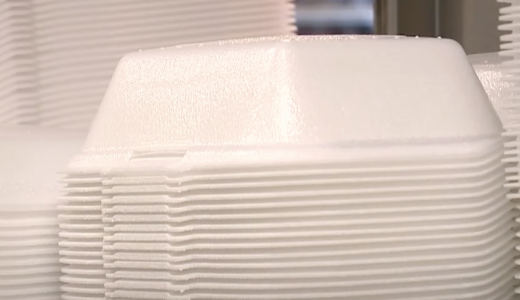Could your next fast food order cost more? Here's what’s changing this July
By
Veronica E.
- Replies 0
Have you noticed your go-to burger or drink creeping up in price?
Starting this July, a new law rolling out across several states may explain why.
But it’s not inflation or ingredient costs this time—it’s all about packaging.
A ban on Styrofoam containers is officially in effect in 10 states, and while it’s designed to help the environment, it could bring unexpected costs to your favorite meals.
Here’s how this shift might affect your next takeout order—and what it means for businesses, budgets, and the planet.

Expanded polystyrene, better known as Styrofoam, is now banned in many restaurants and fast food chains across 10 states.
Chains with 20 or more locations that don’t comply could face $50 fines per day—and those fines add up quickly.
While $50 may not sound steep, the real cost comes from switching to more expensive packaging, which many businesses say they’ll have to pass on to customers.
Styrofoam has long been a go-to for the food industry because it’s cheap—about 14 cents per container—and excellent at keeping drinks cold.
But it doesn’t break down in landfills and can take more than 500 years to decompose, making it one of the most persistent pollutants in our environment.
The most common replacements for Styrofoam—like compostable or biodegradable containers—cost closer to 25 cents each.
That might not seem like much, but for chains serving thousands of meals daily, the cost difference is significant.
While some national brands might be able to absorb those costs, others—especially smaller restaurants or local franchises—may need to raise prices.
And with a broader ban set to take effect in July 2026 that will include smaller restaurants, some in the industry worry that it could threaten the viability of neighborhood favorites and family-owned businesses.
Carrie Leishman, head of the Delaware Restaurant Association, voiced her concern: “The strain this could place on a small business could end so many of them.”
Unsurprisingly, public opinion is divided.
Some customers are mourning the loss of their favorite foam cups—praised for their insulation and iconic feel.
As one diner put it, “I’m fine with the fries change, but taking away the Styrofoam cup? This feels gross.”
Others are more optimistic, pointing out that personal habits can help ease the transition.
“Bring your own tumbler,” one commenter suggested. “The planet will thank you—and your drink stays cold even longer.”
Leaders across the country are embracing this shift.
Maine was the first state to ban Styrofoam back in 2021.
In support of the policy, Maine Governor Janet Mills remarked, “While that cup of coffee may be finished, the Styrofoam cup it was in is not… It will be around for decades to come, breaking down into particles that pollute our environment and harm our wildlife.”
The message from policymakers is clear: protecting the planet is worth the adjustment—and Styrofoam’s time is up.

The Styrofoam ban isn’t happening in isolation.
States like California are working to reduce single-use plastics by 25% by 2032, and New York banned plastic bags in 2020.
More local governments are signaling that eco-friendly packaging isn’t a trend—it’s the future.
Change can be inconvenient, but small actions help ease the shift:
Whether you’re for the ban, unsure about the cost, or simply adjusting to the new normal, one thing is clear—change is happening.
As restaurants and customers navigate this transition together, small steps like bringing your own cup or supporting local spots can make a meaningful difference.
Read next: Stop doing this now: Scientists reveal why it’s a bad idea to reuse plastic bottles and to-go containers

What’s your take? Would you pay a little more to reduce waste? Have you found a reusable cup or food container that works for you? Share your thoughts—we’d love to hear how you're adapting!
Starting this July, a new law rolling out across several states may explain why.
But it’s not inflation or ingredient costs this time—it’s all about packaging.
A ban on Styrofoam containers is officially in effect in 10 states, and while it’s designed to help the environment, it could bring unexpected costs to your favorite meals.
Here’s how this shift might affect your next takeout order—and what it means for businesses, budgets, and the planet.

Changes in packaging laws are reshaping the way many restaurants serve takeout this summer. Image Source: Pexels / Isaac Taylor.
What’s changing with the Styrofoam ban?
Expanded polystyrene, better known as Styrofoam, is now banned in many restaurants and fast food chains across 10 states.
Chains with 20 or more locations that don’t comply could face $50 fines per day—and those fines add up quickly.
While $50 may not sound steep, the real cost comes from switching to more expensive packaging, which many businesses say they’ll have to pass on to customers.
Styrofoam has long been a go-to for the food industry because it’s cheap—about 14 cents per container—and excellent at keeping drinks cold.
But it doesn’t break down in landfills and can take more than 500 years to decompose, making it one of the most persistent pollutants in our environment.
Also read: Are you eating plastic? Urgent recall of a popular Trader Joe’s frozen item!
A cost shift from businesses to customers
The most common replacements for Styrofoam—like compostable or biodegradable containers—cost closer to 25 cents each.
That might not seem like much, but for chains serving thousands of meals daily, the cost difference is significant.
While some national brands might be able to absorb those costs, others—especially smaller restaurants or local franchises—may need to raise prices.
And with a broader ban set to take effect in July 2026 that will include smaller restaurants, some in the industry worry that it could threaten the viability of neighborhood favorites and family-owned businesses.
Carrie Leishman, head of the Delaware Restaurant Association, voiced her concern: “The strain this could place on a small business could end so many of them.”
Also read: Have you seen this strange ribbed plastic thing in your toilet? The reason will surprise you
What customers are saying
Unsurprisingly, public opinion is divided.
Some customers are mourning the loss of their favorite foam cups—praised for their insulation and iconic feel.
As one diner put it, “I’m fine with the fries change, but taking away the Styrofoam cup? This feels gross.”
Others are more optimistic, pointing out that personal habits can help ease the transition.
“Bring your own tumbler,” one commenter suggested. “The planet will thank you—and your drink stays cold even longer.”
Also read: 4 everyday kitchen items a doctor avoids due to potential health risks—are they in your home?
Lawmakers weigh in
Leaders across the country are embracing this shift.
Maine was the first state to ban Styrofoam back in 2021.
In support of the policy, Maine Governor Janet Mills remarked, “While that cup of coffee may be finished, the Styrofoam cup it was in is not… It will be around for decades to come, breaking down into particles that pollute our environment and harm our wildlife.”
The message from policymakers is clear: protecting the planet is worth the adjustment—and Styrofoam’s time is up.

Styrofoam containers, once a staple of takeout packaging, are being phased out in many states due to environmental concerns. Image Source: YouTube / KHON2 News.
Also read: 7 genius hacks to drastically cut down your plastic use starting today!
Part of a growing national trend
The Styrofoam ban isn’t happening in isolation.
States like California are working to reduce single-use plastics by 25% by 2032, and New York banned plastic bags in 2020.
More local governments are signaling that eco-friendly packaging isn’t a trend—it’s the future.
Also read: How much plastic is in your brain? New study reveals a shocking spoonful of truth!
What you can do as a customer
Change can be inconvenient, but small actions help ease the shift:
- Bring your own container: Many cafes and restaurants allow you to bring your own travel mug or takeout container.
- Support local spots: Let neighborhood restaurants know you appreciate their efforts—and be patient if prices rise slightly.
- Stay informed: If you have concerns or ideas, get involved in community forums or reach out to your local representatives.
Whether you’re for the ban, unsure about the cost, or simply adjusting to the new normal, one thing is clear—change is happening.
As restaurants and customers navigate this transition together, small steps like bringing your own cup or supporting local spots can make a meaningful difference.
Read next: Stop doing this now: Scientists reveal why it’s a bad idea to reuse plastic bottles and to-go containers
Key Takeaways
- A new Styrofoam ban now in effect in 10 states could lead to higher fast food prices as restaurants switch to more expensive biodegradable containers.
- Restaurants using non-compliant packaging could face daily fines of $50, while alternatives cost nearly double the price of traditional Styrofoam.
- Supporters of the ban say it will reduce long-term waste and environmental harm, but small business advocates fear it could burden local eateries.
- Public reaction is mixed, with some praising the environmental benefits and others concerned about cost increases and the loss of familiar foam cups.
What’s your take? Would you pay a little more to reduce waste? Have you found a reusable cup or food container that works for you? Share your thoughts—we’d love to hear how you're adapting!






